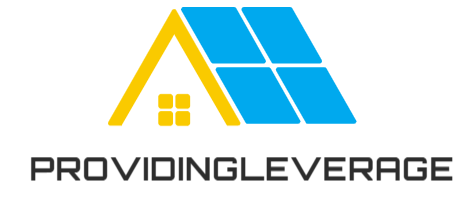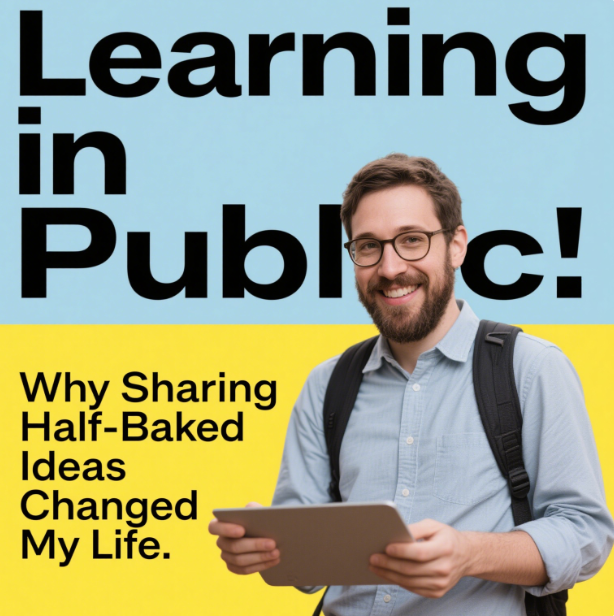For a long time, I believed that ideas had to be perfectly polished before they were worth sharing. I thought you needed to have it all figured out—proof, evidence, a clear angle—before letting others peek into your work. But somewhere along the way, I realized something that completely changed how I approach learning and creativity: waiting until something is “ready” often means it never sees the light of day.
That’s when I started learning in public.
The idea is simple but powerful: instead of hiding your process behind a curtain and only revealing the final product, you open the door mid-way. You share the mess, the drafts, the unsure steps. You show your thinking as it’s evolving—unfiltered and unfinished. And while it might feel vulnerable (and sometimes terrifying), it can be one of the most transformative ways to grow.
The Myth of the Finished Product
We’re trained to admire the final result: the successful app, the viral post, the published book. But we rarely see the journey that got it there—the missteps, the rewrites, the months (or years) of tinkering. This creates a dangerous illusion that great work just appears, fully formed, from talented people who know what they’re doing.
The truth? Most great ideas begin as half-baked thoughts. And when you share those early thoughts, something incredible happens: they get better, faster.
When I first started posting unfinished ideas online—early notes on an article, sketches of a side project, raw reflections on a book I was reading—I was nervous. What if I looked dumb? What if people disagreed? But I quickly realized that the very act of sharing opened doors I couldn’t open alone.
People responded. They added their own insights, pointed out gaps I hadn’t considered, or offered encouragement when I was unsure. What started as something rough began to take shape—not in isolation, but through interaction.
Feedback Loops and Accelerated Learning
Learning in public creates an instant feedback loop.
Instead of working alone in a vacuum, you get to test your thinking in real time. You post a sketchy idea, and someone replies with a counterpoint. You draft a tool and a developer suggests a better way to build it. You outline a theory and a stranger drops a link to a related article that reshapes your perspective.
This collaborative refinement can be more valuable than any course or textbook. It turns your audience into co-creators and turns learning into a two-way street.
It also has a curious side effect: you start caring more about your own learning process. When you know you’ll be sharing what you learn, you take better notes. You ask better questions. You start noticing how you learn, not just what you learn. Your thinking deepens, not for performative reasons, but because teaching—even in informal tweets or blog posts—forces clarity.
Overcoming the Fear of Imperfection
Of course, sharing your unfinished thoughts doesn’t come without fear. The fear of being wrong. Of being misunderstood. Of being judged.
But here’s the thing: we all start somewhere. Nobody has it all figured out. And the people you admire—whether they’re developers, designers, writers, or thinkers—they all once stood where you’re standing, unsure and unpolished.
By sharing your imperfect ideas, you’re not pretending to be an expert. You’re saying, “I’m figuring this out. Want to join me?”
That honesty is disarming. It draws people in. It makes your learning journey more human and relatable. And perhaps most importantly, it gives others permission to do the same.
Building a Reputation Through Transparency
Ironically, when you start sharing your messy process, people don’t think less of you. In fact, many will trust you more. Learning in public builds reputation—not by showcasing your brilliance, but by showing your curiosity, consistency, and openness.
It’s not about proving how much you know. It’s about proving that you care enough to keep learning.
And over time, this creates a portfolio of progress. You look back and see how far you’ve come—how your ideas evolved, how your skills matured, how your worldview expanded. It’s a living archive of growth, and it’s deeply motivating.
The Ripple Effect
Perhaps the most rewarding part of learning in public is the ripple effect it creates. When you share your learning journey, you make it easier for others to start theirs. Your courage gives others courage. Your questions give others permission to be curious.
And the compounding effect is real: one half-baked blog post might inspire someone else to start writing. One open-source snippet could become the foundation of someone’s next project. One note in a thread might change the way someone thinks.
That’s leverage. That’s impact. And it starts with something as simple as hitting “publish” before you feel ready.
Final Thoughts
Learning in public isn’t about being loud. It’s about being real. It’s not about having answers—it’s about asking better questions. It’s not about chasing perfection—it’s about chasing clarity, one messy post at a time.
If you’re on the fence, start small. Share a note. Publish a rough idea. Talk about what you’re learning this week. See what happens. You don’t need a big audience—just enough momentum to keep going.
Because the truth is, we grow faster when we stop pretending we’re done.
And sometimes, all it takes is a half-baked idea shared with the world to spark something remarkable.
Let your learning be seen. It just might change your life.




